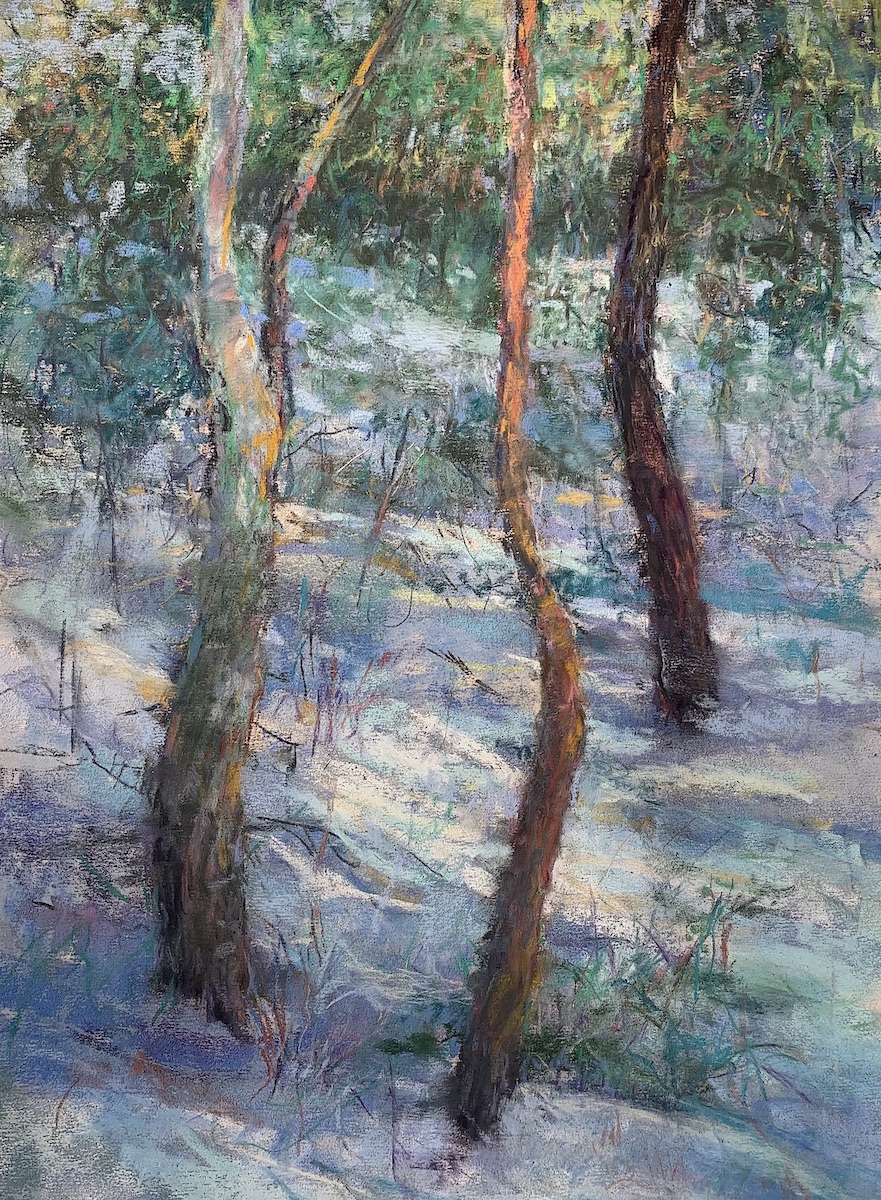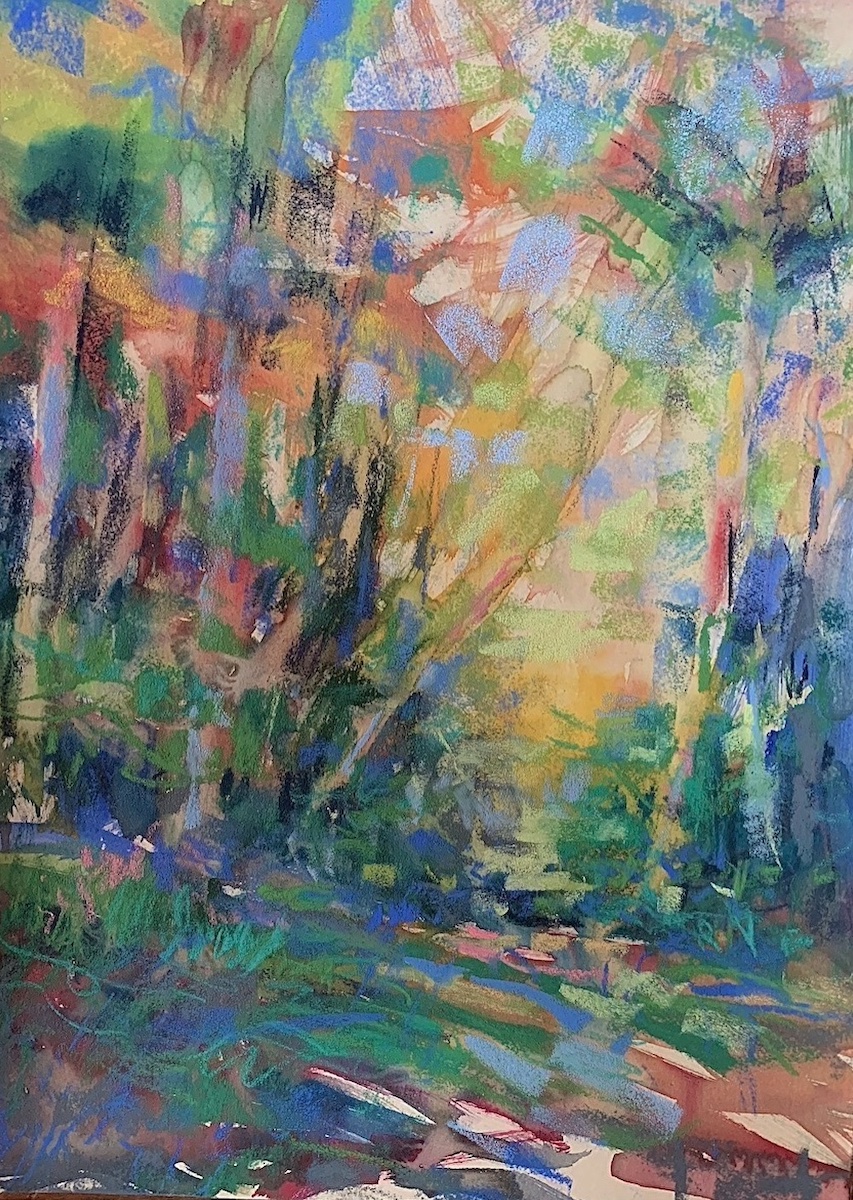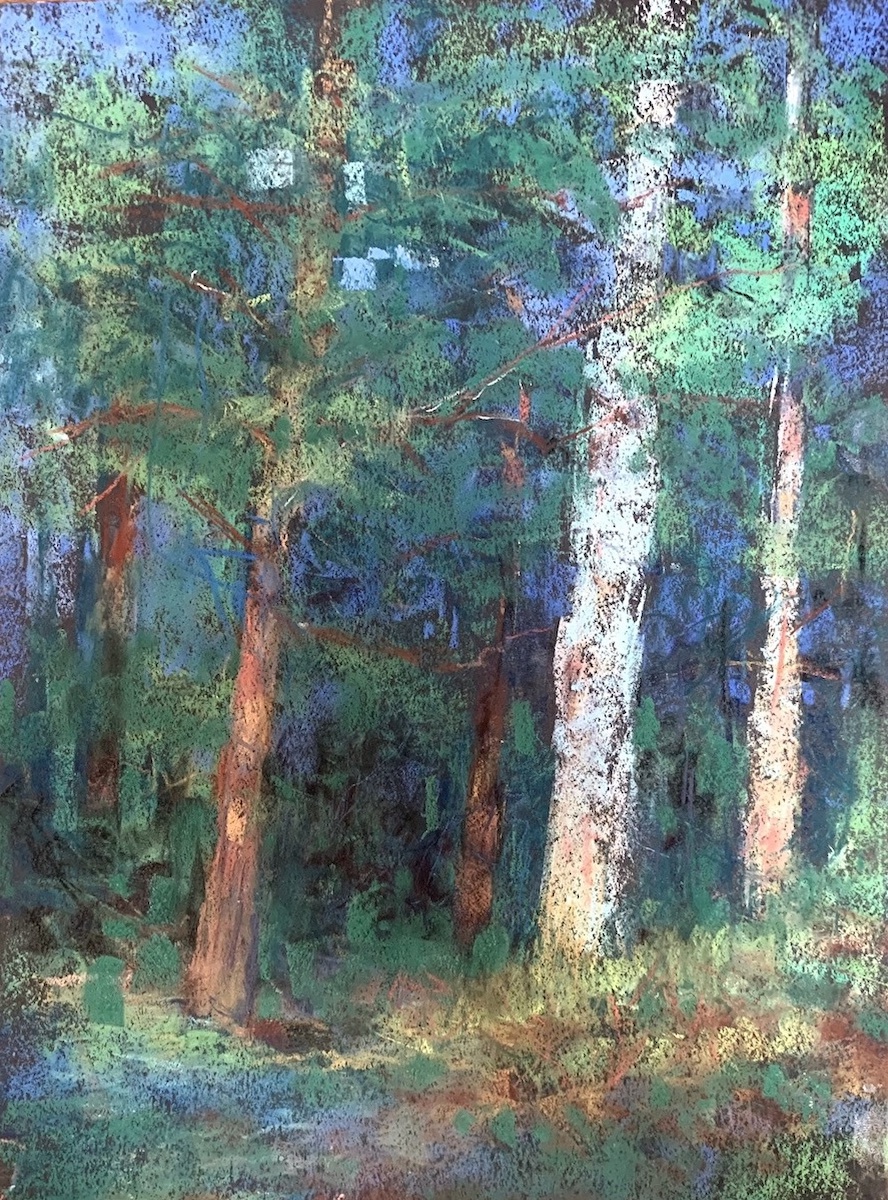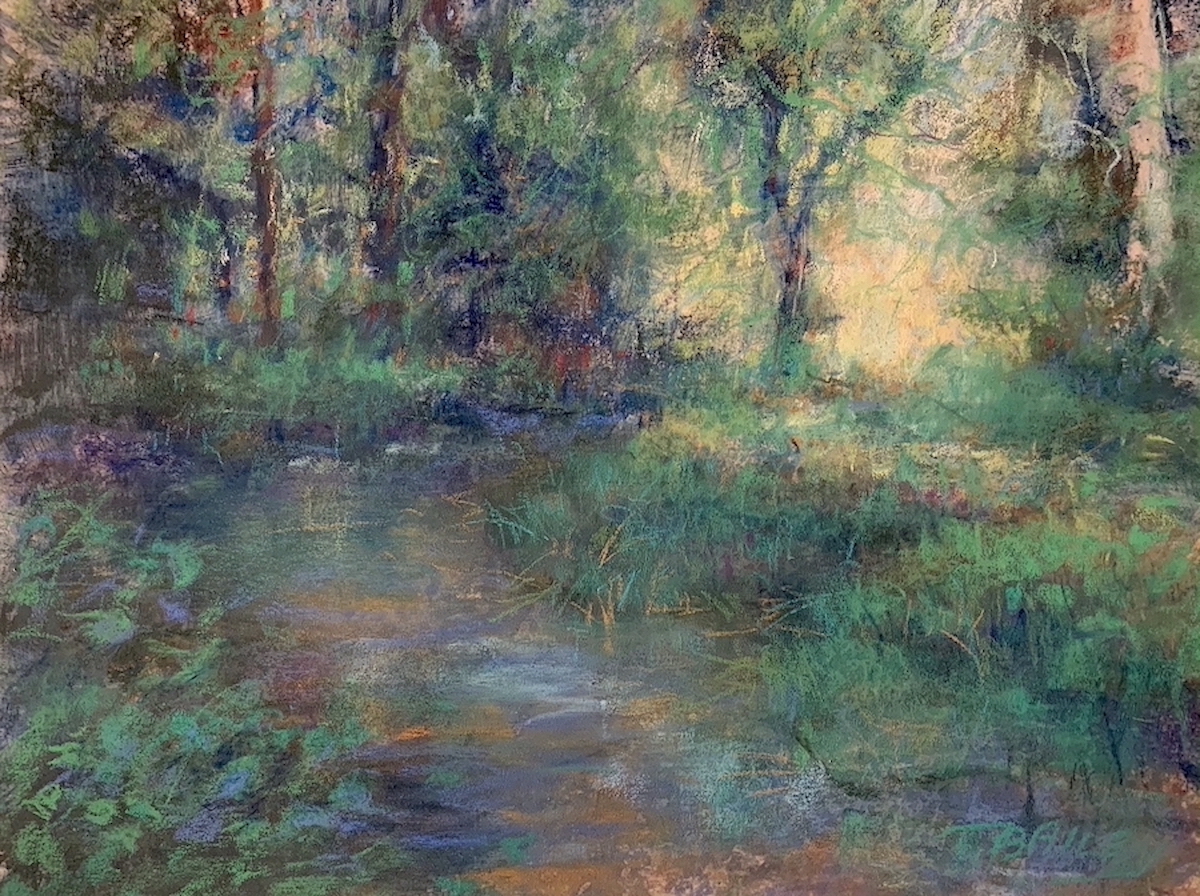An interview with plein air pastel painter Tom Bailey
by Laura Vailati
Art enthusiast and Editor at Miami Niche
“With pastel sometimes you get lost, sometimes you find the path, and sometimes you realize you’re already on it,” said Tom Bailey, who will be among the faculty members of the third edition of Pastel Live, August 16-19, 2023. Tom is in the “Masters Circle” of the International Association of Pastel Societies.

Originally from New England, Tom put aside his Economics degree and sold his advertising agency to devote himself full-time to art, a passion he began as a child. Now he lives between a small town, south of Keene, New Hampshire, and Amesbury, a small town north of Boston, where he has his studio. Both of the wood houses are close to the woods; a detail that also defines him since he considers himself a woodsman.
“The woods is a place where I want to be because I love walking, sitting with my back to the ground, and looking around. This is what I also convey in my painting and there is a big lesson in that: pick what you try to convey,” said the artist. The sense of a place is in fact one of the components that capture his attention in a scene. The others are the textures and the energy that move the composition based on contrast and variety of colors, values, shapes, and marks.

Tom loves pastel not only because of its immediacy, but also because it represents the perfect synthesis of drawing and painting. With pastel, in fact, he can both draw and move his hand frantically to make small or large stripes, lines and dots, squiggles, or simple touches of color that he lets dance freely on the paper, making him an “Inadvertent Impressionist.” For Tom the colors are not just colors, they are emotions that he amplifies when, by accident, he starts to create the big bold lines that have become the essence of his style. When he decided to follow his passion for pastels 14 years ago, he decided to learn the basics from two living masters: Richard McKinley and Albert Handell, who got him “addicted” to it.

Aware that painting requires combining different components such as imagination, memory, and knowledge, Bailey usually approaches composition from something that piques his interest, which may be the scene itself or a part of it. He then enjoys changing different compositional elements, such as: shape, perspective, size, panel formats, but he also determines what he wants to bring out with particular textures.
In his works, which he does vertically at the easel so he has a sense of proportion, the vibrancy of the colors emerges from the balance between background and foreground. He does not like to mix colors, even in underpainting, which he does with hard pastels and alcohol.
Bailey’s particular vision of art is atypical and is reflected not only in his use of soft, semi-hard, and hard pastels, which he alternates in all the levels of work – from the beginning to the end – but also by making different marks starting from the first large flat shapes. Sometimes, on his toned sanded paper, he goes so far as to lay down 15 to 16 layers of color starting from the harmony of values and from the colored underpainting for which he evaluates different options of color temperatures. In case he cannot completely cover the sheet, he inserts some “dancing colors” – the shimmering ones – later.

Bailey’s favorite subjects are landscape scenes where paths, waterfalls, and especially trees become the undisputed protagonists. Sometimes he recreates the same scene several times, usually by cropping or varying compositional elements directly on preparatory sketches or with the use of photographic images, reworked with Procreate. “Going back to the same scene again and again is like visiting old friends: if they are good, you can go back and find new things to talk about,” he said.
Tom likes to play with what the viewer expects instead of what is actually on the canvas. That is why he uses several focal points: the main one with many subplots around it. As the viewer explores Tom’s paintings more closely, s/her discovers that behind a facade of green are hidden a thousand squiggles composed of a variety of colors the artist harmoniously arranges in the composition as “little melodic echoes” that he places in unexpected areas. Melodic echoes could be likened in literature to the myriad of new meanings that entice the reader to read a book over again.

Tom said he considers Pastel Live to be a great event that combines the basic ingredients into the perfect recipe. “There are so many artists with different styles that there is something for everyone at any level, even established artists,” he said. “If you learn something from each of them, you will achieve unexpected goals. And if you want to replicate exactly what this artist did, do it once to learn how they did it and know the tricks, but then do it your way because what you need to learn is the alphabet, the method.”
And browse more free articles here at OutdoorPainter.com




